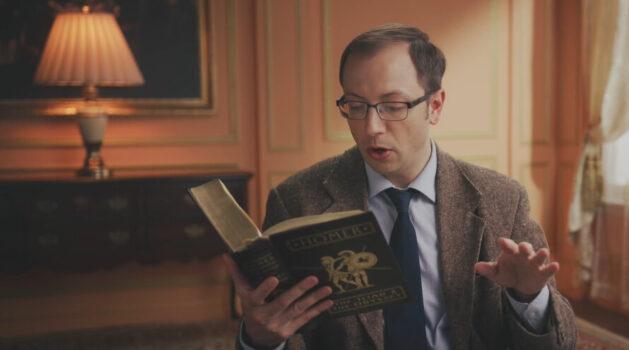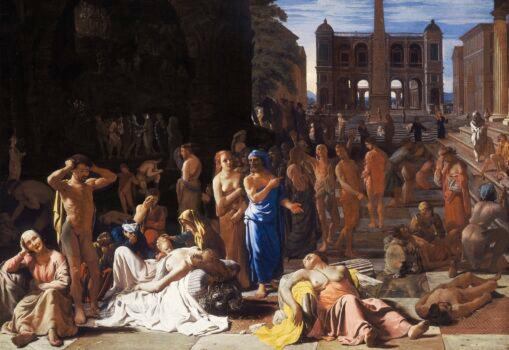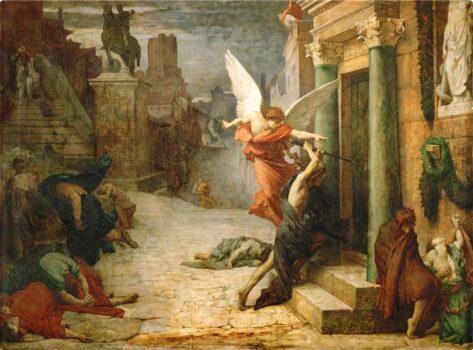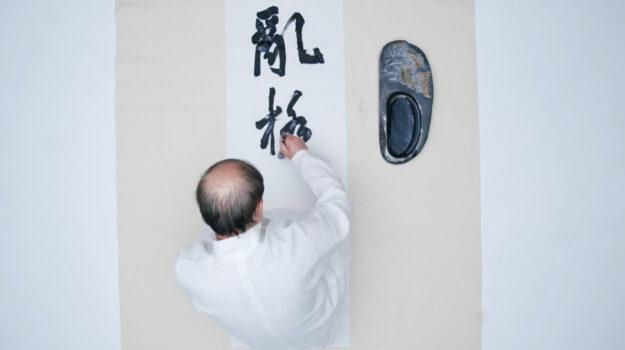Months into the pandemic, uncertainty reigns. The reality is, humanity has survived epidemic disease countless times, and of far deadlier magnitude. But we cannot survive this one if we lose our humanity, according to a new film by NTD Television.
The new documentary, “When the Plague Arrives,” looks at plagues in the context of the story of humanity, to see where it really stands. The documentary premieres online on July 12.

When the lockdowns began, a lot of people around me were frustrated and depressed. There was this environment of fear and frustration, and I had absolutely no wish to talk about the death toll and all the devastation we would face because of this crisis. That just wasn’t what I wanted to do at all.
I wanted for us to find a way to create something that would encourage people, and empower our souls amid this crisis, and because our scriptwriter Catherine Yang and I had just been working on a fine arts documentary, I knew art could be our way in to do that. We were also brainstorming with Evan Mantyk, the president of the Society of Classical Poets and a literature teacher, who narrates the film, about the role of plague in stories and history.
In paintings, poems, literature, you can find yourself there, just in different costumes and circumstances. The fundamental human emotions, the whole of the human condition can be found there—you see yourself there. That was how we wanted to use history in this story—not a recitation of facts and figures, but as a way to connect to people where they’re at right now.

Most people—except those who survived the 1918 pandemic perhaps—have never experienced anything like this, but at the same time we know there’s been all these big plagues and pandemics in the past. And the more we read about these pandemics, the more we saw that the story wasn’t about disease back then either, it’s about crisis and a test of our humanity and things that are really quite universal. I’m not Chinese, I’m not Roman, but these stories are about the human experience and universal values, and we think all people—no matter your country or education or age or background—can connect to these universal things.
For instance, we talk a lot about justice today, but do we really have the courage to stand against evil? It’s hard. Our culture doesn’t have a strong moral standard, and the result is that human dignity suffers for it. Human dignity really is at the heart of it—this is what comes to the forefront when you really get into these stories of crisis.

In this difficult time, and we really are going through difficult times, my hope is that people remember they can be good, choose good, no matter who you are or where you’re from. Every moment, every choice that we make will be part of human history and what we leave to this and the next generation. I want people to have strength through this crisis, instead of just being down and depressed. This is something we have to face, but it really depends on how you deal with it, how you think about it. You can have strength instead of just resentment and anger.
I thought it really spoke to a lot of the historical stories we explored in the documentary, and of today. Because it’s not just disease, the whole world really is thrown into chaos.
I thought it would be really strong if we could convey this through calligraphy. Mr. Liu, who appears in the documentary, was cast at the last minute. He was a really renowned calligrapher in mainland China, and had been featured in a lot of TV programs. What we wanted to do with the shoot was this big, large-scale writing of this four-word proverb, laid on the ground, with sort of this connection to the earth. He only works in the traditional style, and writing on the ground is indeed not a common way to write, and it’s very challenging for him. He didn’t want to do any modern performance art or anything like that—“order must be restored”—we wanted to have the sort of righteous energy that could capture that.
The setup took about five hours, so I ended up chatting a lot with him on set and he shared this incredible story and told me about his time in China. I didn’t know that he had been persecuted so badly, by the Chinese communist regime, all because of his faith, because he didn’t want to give up his belief.

People forget this, but spiritual believers from all orthodox religions face persecution in communist China. He was persecuted so brutally he was left for dead, he really almost died, and it was a miracle that he not only survived but managed to make it out of China. It was just such a dramatic story and after I heard that I knew he really was the perfect person for that scene.





